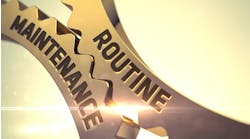Is it a good idea to borrow money to acquire test equipment? There’s no simple answer to that question, unless you don’t mind wrong answers. But here are some guidelines to keep in mind:
• Don’t borrow just to have more cash at your disposal. Borrow for a specific purpose.
• Dig past initial impressions. The stated purpose may be a poor investment of those borrowed funds. For example, it may not make sense to borrow funding for a high-end piece of test equipment if you don’t have a certified technician who can maximize your investment. Borrowing to certify a technician or hire a certified technician does make sense; certification training from the better providers includes education on selecting the right equipment for the intended uses.
• Take time to determine the total that must be borrowed to meet the intended goal. Any trained estimator can use estimating methodology do to this, and other approaches also work. Guessing isn’t one of them. If your loan falls short of what you need, you may strain other resources to pay for this project, or the project may fail and defeat the purpose of the loan. If you borrow too much, you’re paying for funds you don’t need.
• Decide whether this loan is worth taking before seeking funds. Many small shops use payback as their decision factor, and that is a huge mistake. Others use the annual percent of return, and that also is a huge mistake. If you do not know how to calculate cash flows and perform financial calculations that account for the cost of capital over a specified time (e.g., MIRR), hire someone (e.g., an MBA or other financially trained person) to do this for you.
• When loan shopping, convert everything to a standard value. Many loans are pitched in a way that forces an apples-to-oranges comparison. This is why many borrowers pay an APR of more than 50 percent and do not realize it. Speaking of APR, this is a standard value by which to compare loan costs. If you compare everything with an APR, you avoid being scammed by loan sharks.
• When looking over loan offers, compare the cash flows and MIRR (or similar) with the loan cost. Immediately rule out any loans that cost more than what the project brings in and those that barely permit any profit. If no offers remain, don’t borrow. At least, not just yet.
• Consider expanding the scope. Suppose an existing client offers you a maintenance contract, but they need you to buy specific test equipment. Analyzing cash flows, you see that even a loan at 1 percent interest would not justify doing this. But suppose you could double or triple your revenue numbers in the cash-flow analysis? That means expanding the scope from a one-off project to a new line of business. You could start by talking with existing and prospective customers to gauge their interest.
• Always review your underlying assumptions and the numbers you are using. Your underlying assumptions may be too rosy or too restrictive. Or even just plain wrong. What looks right on the surface often is not right; peel back that onion and check the layers you find. Check your math, too. Simple errors like number transposition or adding another digit (or losing one) can result in very misleading numbers.
These guidelines should help you answer the question of whether to borrow. Sometimes, the analysis will show there’s not a compelling reason. Does this mean you should not borrow? Perhaps it just means you need to look for another way to use borrowed money to expand your business.




